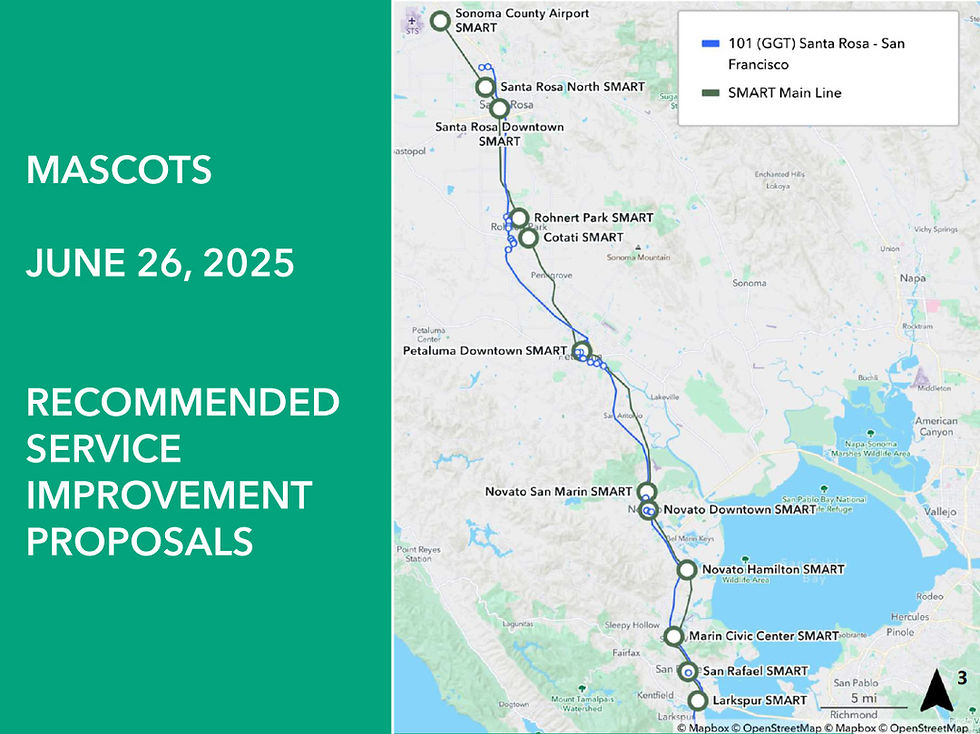Learning from History
- Friends of Smart
- Jan 25, 2020
- 2 min read
By Jack Swearengen

Imagine for a moment that you are gazing with me at two documents. The first is a photograph entitled “End of Rail Three Miles East of Hutchinson, Kansas, in 1872.” The photo was taken by C.C. Hutchinson, who founded of the town of Hutchinson. Perhaps just like residents of Windsor, Healdsburg, and Cloverdale, C.C was eager to see the railroad reach his town. Ironically, naysayers have tickled themselves by lampooning the SMART as “the train to nowhere.” But now that SMART serves both Larkspur and the Sonoma County Airport, the naysayers have stopped using the term. The second document is a map of the “Denver & Rio Grande Railway 1872-1873, Showing Construction Steps.” The map shows that construction proceeded in many stages spanning twelve years.
In each of these two examples― essentially replicated all the transcontinental railroads―construction proceeded until funds ran out. Then the builders went back to Washington and to investors, seeking additional funds to complete the projects. The Interstate Highway System remained under construction for sixty-two years. How long did it take to build―and rebuild—the Bay and Golden Gate Bridges?
What’s the lesson here, other than a look-back into history? Simply this: those who refuse to learn from history are doomed to repeat it—or lampoon folk who seek to apply the lessons learned. “Rome wasn’t built in a day,” we say; but why are naysayers criticizing SMART for building in stages? “It is costing more than forecasted,“ we are told (over and over). From my vantage point, it seems that the naysayers ought first to look at the history of great transportation projects, especially those that were built in anticipation of future need. To allow the project to die (as a “NO” on measure I surely will) is to pretend that the population of the North Bay counties will cease to grow, or to assume that we can avoid future congestion by laying more pavement. If we do what we’ve always done, we’ll get what we’ve always gotten.
The opportunity costs were high, but in each case the railway builders were inspired by the vision of a connected nation and better travel. Opportunity cost represents the benefits an individual, investor or business misses out on when choosing one alternative over another. Financial reports do not show opportunity costs. Because by definition they are unseen, opportunity costs can be easily overlooked if one is not careful. Naysayers need to consider the potential missed opportunities when they argue against Measure I.



Comments